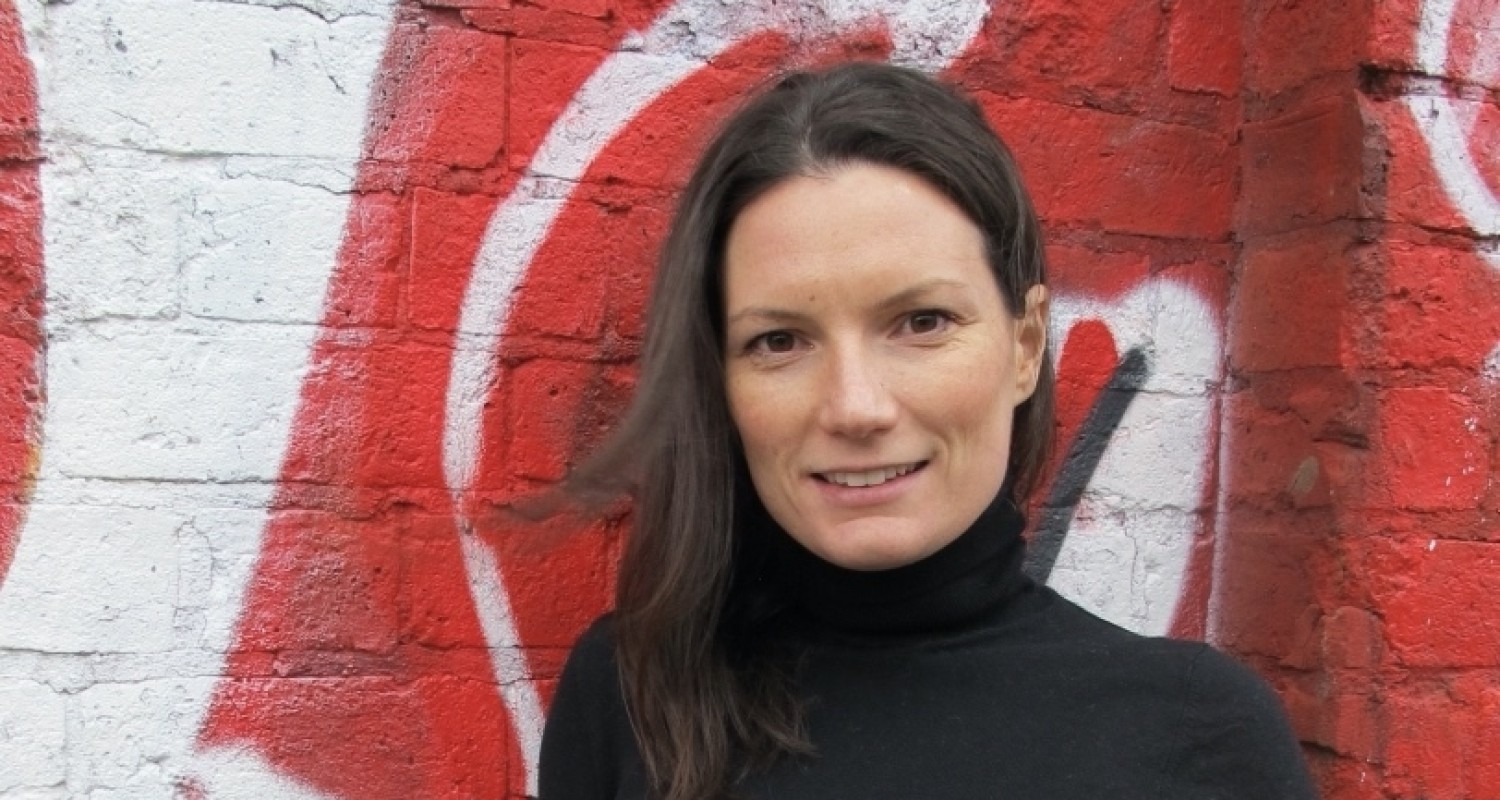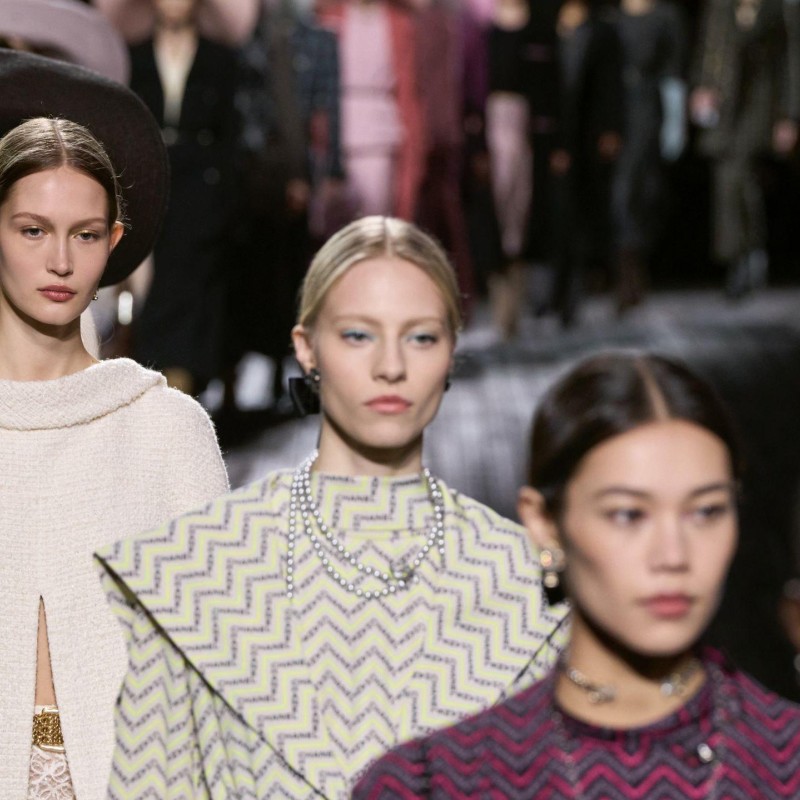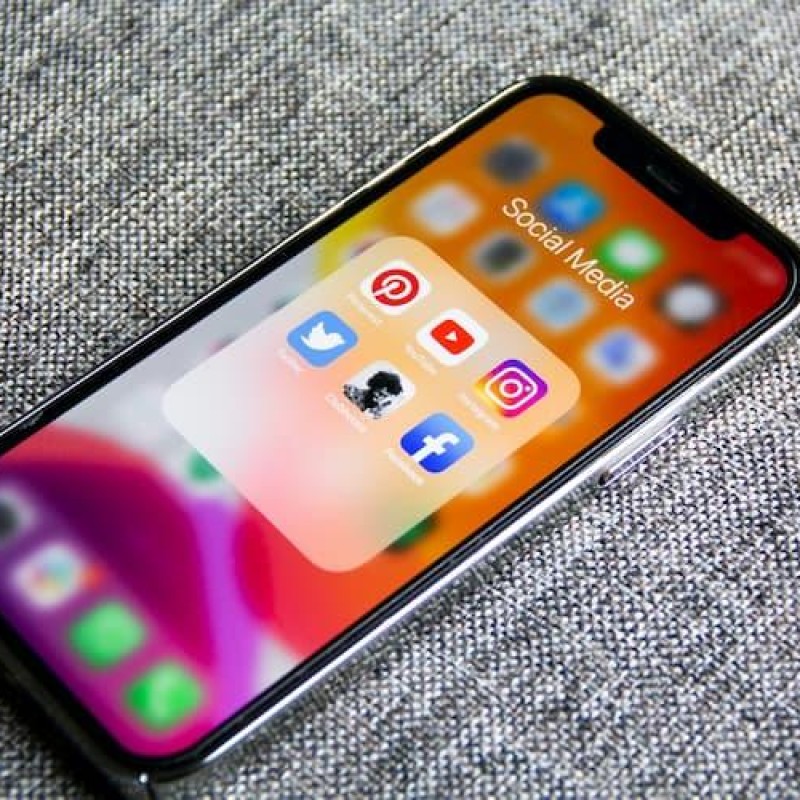“Customer-centricity is key for good product development. Being able to be in our target audiences’ shoes and understanding what they need, how and when they need it is crucial.”
A.M.

What goes on behind the scenes to maintain a fashion brand and launch new collections? Join us as we talk with Anna Moro, Global Head of Marketing and Communication at LaDoubleJ, about her role in a ‘day in the life of Marketing Director’ style interview. Anna reveals how she develops and implements effective marketing campaigns, while strengthening a brand’s culture and values to meet long-term business goals. The marketing guru also shares her tips on how to become a marketing director – even when competition is tough.
BT: Tell us more about yourself. How did you find your passion for marketing and the fashion industry? Was it clear right from the beginning that you wanted to become a marketing director?
AM: Yes and no. While graduating at Università Statale di Milano in Foreign Literatures I started some internships in small fashion communication agencies. I was a PR Assistant, Showroom Assistant, Junior Account Assistant. Let’s say, taking baby steps into the fashion world. I loved all these jobs but I felt I was lacking the bigger picture and I was so curious to know more.
I decided to apply to the International MBA at MIP of Politecnico di Milano (Business School). The main driver was my curiosity and a desire to understand how everything fitted together. How does the business of fashion work? Why certain products? Why particular campaigns? It was while studying the marketing module during the course that I found food for my curiosity. The marketing department is tied and connected with everything in a business and deeply rooted in almost every action of our lives too (whether we like it or not).
Marketing is an extremely broad subject and rules and exceptions change all the time. You can study marketing theory but learning while practicing is definitely more effective. The broader you practice the better you’ll learn about it, and the bigger your picture the more strategic your way of doing marketing will be.
If you ask me, “Shall I study for a career in marketing?” My answer is, “100% yes.”
BT: How do you describe your typical working day and where does your inspiration come from?
AM: I read a lot, in fact I read everything. Reading gives me ideas, triggers my thoughts and helps me to continuously learn new things. Marketing as a means of communication requires a deep knowledge of the world we are living in and the issues of our times (for example, #metoo, Black Lives Matter). Knowing what’s happening on our planet is necessary to be a good marketer. It allows you to be relevant and, therefore, be good at the job.
As a marketing director I also do a lot of retail and window strolls and go to big department stores to have a look around. Seeing in person how other brands (and also different product categories) are approaching their customers is a massive source of inspiration and learning for me; especially now when physical experience is blended with the digital world.
Lastly, this may take you by surprise, but I don’t spend a lot of time on social networks. I find it hard to get any form of inspiration from these platforms, unfortunately or fortunately – judgement up to you.
BT: When people hear about marketing, they believe it’s about creating ads and campaigns. However, the reality is that marketing goes beyond those things. In your opinion, what’s the value that the marketing department offers to fashion companies in today's business environment?
AM: The beauty of every marketing team is that it is so central and deeply connected with all departments of a business. In a fashion environment where the offering is humongous, marketing is the only way to stand out to customers. Marketing today is no longer about communicating the right product at the right moment; it is having a mission and proving the brand identity through compelling storytelling. It’s about creating a community of people (ultimately customers) that follow your brand with a sense of belonging. Moreover, for fashion brands in a digital era, marketing needs to be always more the flywheel of big social messages, such as sustainability, diversity, inclusivity and tech innovation.
BT: What are the most powerful marketing tools today? Do you expect these to change in the coming future?
AM: Digital marketing is the most powerful marketing tool today. When talking about digital media, we don’t just mean social media channels. There’s also digital magazines, newspapers, blogs, affiliate platforms, marketplaces, digital and programmatic marketing, SEO and of course a strong tailored customer relationship management system (CRM).
Customer-centricity and understanding consumer trends is key for a good marketing campaign, listening to audiences, understanding behaviours, habits and therefore being able to serve what customers want and like, and provide something relevant for them. In a fashion world where tons and tons of products are supplied every day in every corner of the planet, being on point and on time is pivotal.
I truly believe a good marketing campaign today includes a well-balanced media mix, has cross-channel marketing plans and encompasses every digital and physical avenue. A good marketing campaign needs to be tailored for its customers and needs to integrate harmoniously in their everyday life. Offline media, like Out of Home, whether relevant and not too invasive are timeless and must never be ignored as a medium to connect with customers.
BT: The digitalisation of companies has had huge rapid growth in a relatively short period. How is the new digital world shaping marketing trends?
AM: I still remember working on my first Facebook ads with tiny audiences and dealing with the Italian HQ of Facebook which, at that time, had one employee for the entire country. Later, when I was working in an agency, I remember the years when we switched from 80% print and 20% digital to vice versa for all clients in all industries (whereas nowadays this media mix is just normal). The importance of digitalisation stands in the capability of teams to gather learnings, testing and re-testing, tracking and understanding what is working for our audiences and to achieve our business goals, always in full respect of privacy regulations of course.
BT: What do you see as key priorities for fashion brands right now?
Environmental sustainability, diversity, inclusivity, and tech innovation. These are urgencies for the fashion world, which, as we all know, is one of the most polluting industries in the world. Brands who will succeed this year will have a huge focus on being a socially responsible fashion company. I like the Gucci Equilibrium program; I think it’s a good example of how a fashion brand should act. It’s also an incredible case study in demonstrating how huge brands can use their massive customer audience to foster a global cultural change. How a brand can become a driver of messages for a better future instead of merely selling expensive products.
BT: We’re living in an era of big changes in the way companies are presenting themselves to the world. Marketers are a visionary who can identify connections between the existing marketplace and what the brand has to offer. What do you think differentiates a brand from competitors today?
AM: I will repeat myself here, but this concept is key: for a fashion brand to survive and thrive today it needs a vision, a mission beyond profits, and a real DNA of clear messages that puts the world and its customers’ first. In the luxury fashion industry (where I work) we are not buying a dress from a big brand because we need it to protect us from the cold. We are buying the dress because it makes us feel a certain way, a better way for many reasons.
BT: From your experience what are the main ingredients for successful product development?
AM: Customer-centricity is key for good product development. Being able to be in our target audiences’ shoes and understanding what they need, how and when they need it is crucial. In fact it’s the key to producing the right product when more or less everything is available to us in the world.
BT: Business has changed dramatically in the past decade. Are there any marketing theories that (in your opinion) no longer hold up in today’s fast-paced marketplace? If so, what methods would you recommend avoiding?
AM: Crazy budgets spent over print pages in magazines and newspapers for sure is an effort that can no longer pay off. It’s not sustainable and doesn’t make sense in today’s society. Millions used to be spent in the race to have the best spot in a magazine. This kind of marketing can’t be justified against ROI anymore - content marketing has taken over.
BT: Describe your most successful marketing campaign and how you worked with other departments to accomplish your goals. What was your strategy? Who was your audience? What channels did you use?
AM: Marketing is such a broad field and embraces all departments in a company. A good marketing campaign happens when the entire company is aligned on the project. Actually, it starts from the inside. Internal marketing is one very important thing that sometimes companies forget about: acknowledging employees on what they are working for is the first important touchpoint. Our first supporters are inside the company, inside the factory and this is connected with the larger topic of nurturing a company culture of respect and inclusivity, from the employer to every single employee.
One cross-department project (during my time at Bally) I had the pleasure to work on revamping the Bally Heritage which rooted back to 1851. We were tasked to develop a new image that would reposition the brand at the forefront of the fashion luxury world, while tackling the sensitive and pivotal topic of sustainability. Bally's long-standing tie to the mountains begins with its alpine origins and pioneering legacy. Since 1851, Bally’s products and brand philosophy have reflected this mountain heritage and pioneering spirit, which continues over centuries. From sponsoring the Swiss Winter Olympics team and early 20th century Swiss expeditions, to creating the iconic reindeer boots worn by Tenzing Norgay during the first-ever ascent of Mount Everest in 1953 with Sir Edmund Hillary. Bally has always had a deep reverence for the environment and outdoors.
In 2019, Bally returned to Everest introducing its Bally Peak Outlook initiative, which included a crucial cleanup from base camp to the peak, as part of a broader sustainability program. Led by environmental activist and mountaineer Dawa Steven Sherpa and his team of expert climbers, two tons of waste were successfully removed from "The Roof of the World" with over half collected from the "Death Zone," restoring the pristine landscape of the sacred mountain. A full collection of products from ready-to-wear to special gifts were created to support the initiative and have continued to support the global project over years. A roll-out of store events also supported the program to spread the story across the world. Every event was organised individually and hosted by key media titles to amplify the message throughout authoritative platforms.
BT: In your opinion who are the main global companies shaping the way marketing is done? Is there a company you admire?
AM: 100% the winner is Patagonia. Everything you read and see about the brand is coherent with its company identity. The marketing is all focused on nurturing its brand pillars with authentic storytelling and its consistency goes 360 degrees throughout the entire business. Patagonia’s marketing strategy is all focused on the company commitment for a more sustainable planet. Customers are buying a jacket because they feel they are contributing for a good cause. Now, that’s cool! That said, the recipe of their success is not just their winning marketing and communication strategy but also flawless products and omnichannel strategy.
BT: What advice would you give to people that would like to pursue a career in fashion marketing and have ambitions to become a marketing director one day?
AM: Read, study and listen! These days there are incredibly good masters’ programs in fashion management, if not the standard MBA that I did. Not all are crazy expensive and there are a lot of very good scholarship opportunities. I feel this is one of the best ways at getting into the nitty gritty of the world of fashion. Moreover, internships and any kind of experience related to the industry is always enriching. Always remember you can learn good things from bad things. There is no bad experience - it’s all experience.
BT: Is there any particular marketing/business guru or book you’d recommend following or reading to help with a marketers’ career?
AM: Scott Galloway’s podcasts and books are the holy words for everyone in marketing I would say. I’d also suggest googling the Coca Cola marketing strategy history as probably one of the most interesting stories of our times on how to build a giant business with good marketing storytelling.
BT: Lastly, are there any marketing tips or strategies that you’d like to share that you have found particularly helpful?
AM: Team work: your team, other teams, groups of people, anything. Learn from others. Everyone’s point of view is important. You get to see opinions from different angles, and learn from agreements or disagreements - that’s an opportunity for all of us! Diversity and inclusion are such a big gift that our society needs to welcome with open arms.
Did you enjoy reading our day in the life of a Marketing Director interview? You might also be interested to read these:





Beyond Talent
Fashion Recruitment Agency
Specialising in Senior and Executive recruitment for the luxury fashion, lifestyle and beauty industries worldwide.
Head Office Address
20-22 Wenlock Road, London, N1 7GU
Contact Us